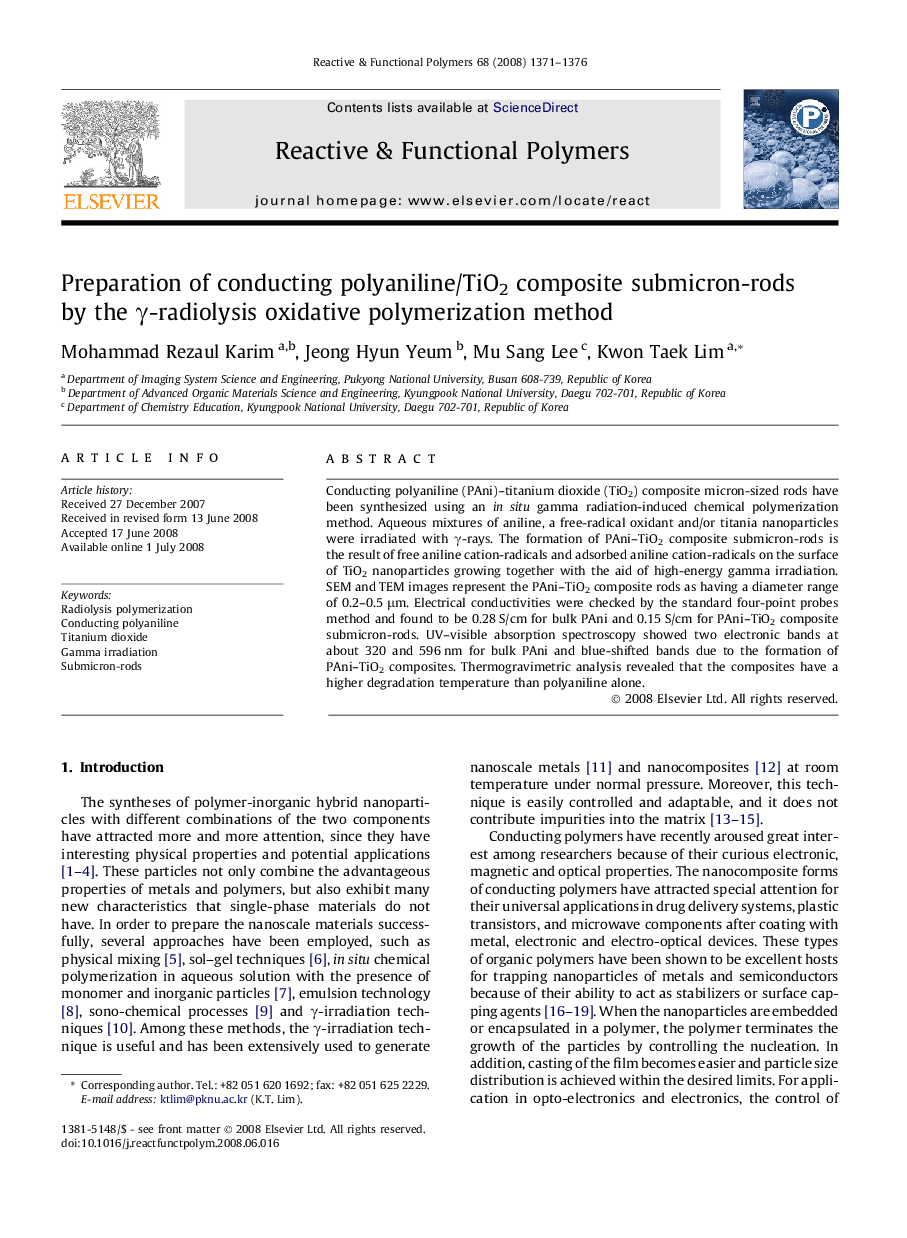| Article ID | Journal | Published Year | Pages | File Type |
|---|---|---|---|---|
| 5210749 | Reactive and Functional Polymers | 2008 | 6 Pages |
Abstract
Conducting polyaniline (PAni)-titanium dioxide (TiO2) composite micron-sized rods have been synthesized using an in situ gamma radiation-induced chemical polymerization method. Aqueous mixtures of aniline, a free-radical oxidant and/or titania nanoparticles were irradiated with γ-rays. The formation of PAni-TiO2 composite submicron-rods is the result of free aniline cation-radicals and adsorbed aniline cation-radicals on the surface of TiO2 nanoparticles growing together with the aid of high-energy gamma irradiation. SEM and TEM images represent the PAni-TiO2 composite rods as having a diameter range of 0.2-0.5 μm. Electrical conductivities were checked by the standard four-point probes method and found to be 0.28 S/cm for bulk PAni and 0.15 S/cm for PAni-TiO2 composite submicron-rods. UV-visible absorption spectroscopy showed two electronic bands at about 320 and 596 nm for bulk PAni and blue-shifted bands due to the formation of PAni-TiO2 composites. Thermogravimetric analysis revealed that the composites have a higher degradation temperature than polyaniline alone.
Related Topics
Physical Sciences and Engineering
Chemistry
Organic Chemistry
Authors
Mohammad Rezaul Karim, Jeong Hyun Yeum, Mu Sang Lee, Kwon Taek Lim,
